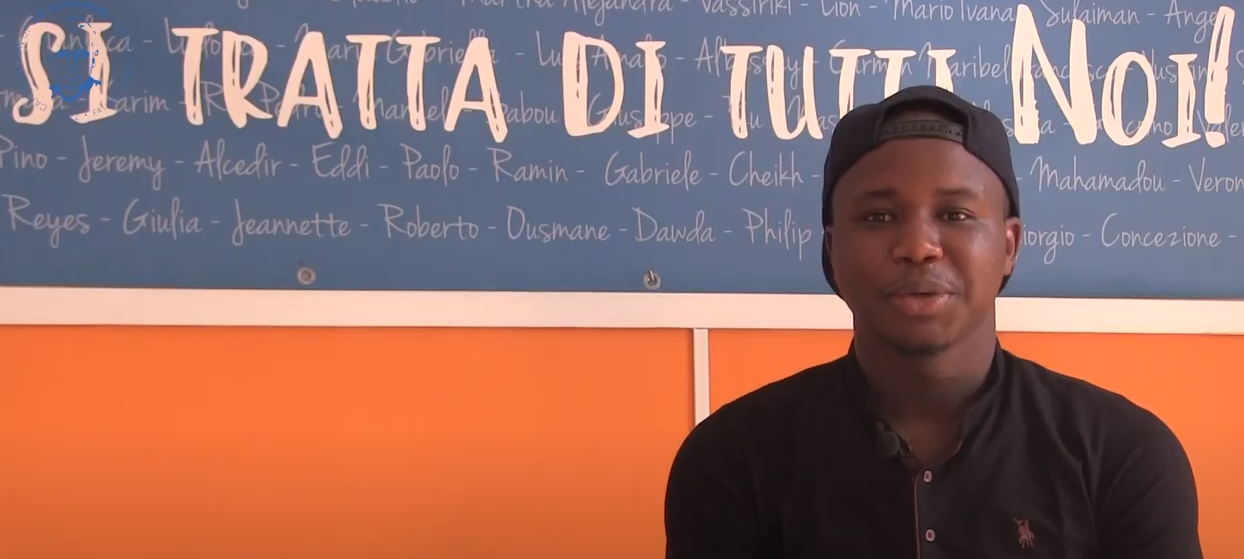Casa Scalabrini 634, the home for refugees in Rome
“I don’t know what my life would have been like if I hadn’t come here”. Precious is 23 years old, comes from Nigeria and is the mother of a three-year-old girl. Since October, she has been living at the Scalabrini House 634, the Rome headquarters of the Scalabrinian Agency for Cooperation and Development, where Scalabrinian Missionary workers and volunteers host families and young refugees on a semi-autonomous basis. “The other facilities do not welcome men. Here I have been able to reunite my family,” continues Precious, who dreams of becoming a socio-medical worker and is now following a professional course.
Rita Urbano, director of ASCS, tells us, “We decided to open Casa Scalabrini 634 in 2015 because we realized that there was a gap in the reception of migrants in Italy. Many people, once they had obtained their documents and left the centers, were not ready for autonomous living, to have a home. Here we allow them to save money, we help them to reunite with their families, to find a better job, to pay for the rent of an apartment”. In seven years, 250 refugee families and young people have been welcomed.
Towards autonomy

Mamadou
Currently, 25 people live there, spread out in apartments, for a maximum period of one year. “They are people from all over the world. We have even welcomed Ukrainian women with their children who have fled the war,” Rita continues. The Scalabrinian operators and missionaries help these people achieve economic and work autonomy through personalized projects. There are many free courses organized by the more than 70 volunteers of the Scalabrinian network: from computers to driving licenses, from English to Italian, from web radio to tailoring. But the first autonomy is the relational one: “We create a network of relationships, so that people, even in the future, if they have a problem, know who to count on and that they are not alone”.
Mamadou, a young man from Gambia, four years after joining Casa Scalabrini, returns regularly to lend a hand and participate in the events and parties that are organized: “In this place I have felt loved”. Mamadou left his family when he was only 15 years old: he left Sudan and was stuck in Libya for two years. At 17, he managed to embark on a makeshift boat to reach Italy: “When you are inside the boat you think that in a second you can fall into the sea and die. It was very difficult”. After arriving in Sicily, he was a guest of some first reception centers, until he arrived in Rome, at the Scalabrini House. “Here I met the friends I live with today. But, above all, I attended a video editing course and discovered that this is my greatest passion: my dream is to be a journalist and video maker.”
An open-air museum on migration

At the Scalabrini House 634, beauty is also created: in June an Urban Art Museum on Migration was inaugurated, the M.A.U.Mi, an initiative of the Ecomuseum Casilino ad Duas Lauros, promoted in collaboration with the Scalabrinian Agency for Development Cooperation and the Centro Studi Emigrazione Foundation of Rome. The project consists of the creation on the garden wall of Casa Scalabrini 634 of 10 works of street art that will tell the story of migrations in Rome. “We try to network with other realities and with the neighborhood. We have made ourselves known slowly: we clean up the neighborhood, organize events and thus demonstrate that it is first and foremost a meeting place. We want as many people as possible to come and we want the children to go out into the neighborhood,” explains Rita.
Following the teachings of John Baptist Scalabrini, Casa Scalabrini 634 in Rome has become a place of welcome and encounter, where refugees can start their lives and be an integral part of society. “The most beautiful thing is to make a difference for someone in our own small way, to build beauty and relationships,” Rita concludes.


